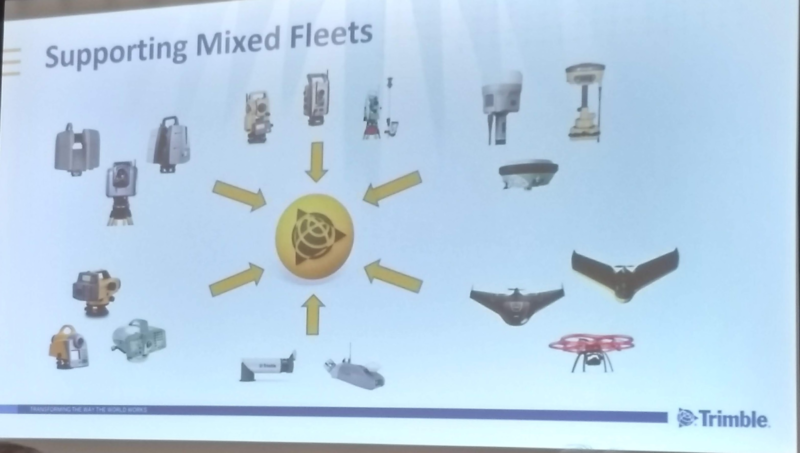It is a familiar picture for everyone in the 3D imaging industry by now: Sensors are so ‘cheap’ that we have more data than we know what to do with.
Maybe we are not quite at that extreme yet, but the 3D imaging tools available to today’s professional are seemingly endless. The main industry portfolios are here to help us though, with their approaches to help consolidate our data processing activities into something as close as possible to a singular processing environment.

Boris Skopljak, Market Manager for Trimble discusses how integrated data processing workflows leads to improvements in data quality
Data integration and singular coordinate frames improve data quality
The principal stories from survey industry heavyweights Topcon and Trimble in the SPAR 3D 2018 product preview sessions were existing data consolidation platforms. Topcon’s MAGNET suite was launched at last year’s Intergeo and Trimble’s Business Centre has been in use for many years.
Trimble’s and Topcon’s approaches have in common the idea that processing in a singular environment for better transparency across the data holdings that you have. As thoroughly described by Trimble’s Boris Skopljak, this brings improved data quality—which of course to a surveyor is of the upmost importance.

Dave Henderson presents features of Topcon’s MAGNET Collage
Your point cloud data is in one place; will processing operations still be endless too?
In any industry, a selection of dominant players will have their own take on the same problem, and once you look beyond the look and feel of user interfaces and the emphasis provided in marketing messages, the functionality of the core solutions will often be very similar. Just as the user has choices to make in which laser scanner to purchase, they now also have choices about which data consolidation platform to opt for.
The problem of choice is further complicated because the functionality of the consolidation platforms is still very point-cloud focused, and so many of the 3D imaging professional’s customers are not point-cloud focused. This leads to there being many vendors, types, and application-specific data processing applications in the 3D imaging industry.
Where data consolidation platforms may lead to fewer generic data processing software packages being used, what I am interested in seeing now is how large theecosystems of application-specific “connector” solutions will grow. Will we see a layer of specialist application-specific 3rd party data processing tools forming, which mean that the user is still presented with a bewildering array of processing options that weakens the arguments for having consolidated workflows in the first place? Or will we see consolidation in the types of techniques that convert the point cloud into deliverables that our non-3D-imaging clients can use?






